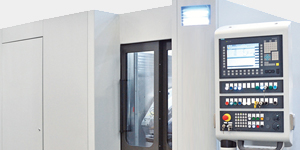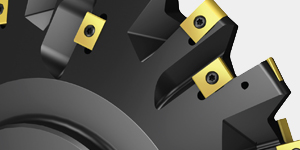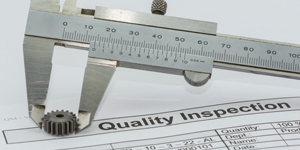Chamfering removes sharp edges from metal parts by cutting controlled angles on corners and holes. This precision process transforms dangerous, jagged surfaces into smooth, angled transitions that improve safety and performance across industrial applications.
Key Takeaways
Chamfering creates angled cuts on sharp edges and holes to improve safety, assembly efficiency, and component durability in manufacturing.
The three main types are C-chamfer (straight 45-degree cuts), R-chamfer (rounded edges), and thread chamfering for fastener preparation.
Proper chamfering requires matching tool selection and cutting parameters to specific materials and applications for optimal results.
What is Chamfering? Fundamentals and Applications
Chamfering is a machining process that cuts material away from edges and corners at specific angles. The most common chamfer uses a 45-degree angle, creating a flat surface between two perpendicular edges. This technique eliminates sharp corners that can cause injuries, assembly problems, and premature part failure.
The process differs from beveling and deburring in important ways: Though beveling cuts through the entire thickness of material, chamfering only removes a small portion from the edge. Deburring simply removes rough spots without creating defined angles. Chamfering creates precise, measured surfaces that serve both functional and safety purposes.
Three main types of chamfering serve different manufacturing needs: C-chamfering cuts straight angles, typically at 45 degrees, and represents the most common approach. R-chamfering creates rounded edges instead of sharp angles, providing better safety and stress distribution. Thread chamfering prepares holes and fasteners for smooth assembly by removing burrs from threaded surfaces.
Chamfering delivers critical benefits that modern manufacturing demands. The process creates safer handling conditions, prevents assembly problems, and extends component life significantly. Parts fit together more smoothly, reducing assembly time and improving quality. The technique also prevents stress concentration points that can lead to cracking and failure over time.

Chamfering Holes and Edges: Essential Techniques
Hole chamfering prepares openings for fasteners, bearings, and assembly components. This process creates smooth entry points that guide parts into position without binding or damage. The technique removes burrs and sharp edges that form during drilling operations. (Figure 1)
These imperfections can prevent proper fastener seating and create stress points that weaken assemblies. Proper hole chamfering ensures bolts and screws sit flush with surfaces, distributing loads evenly across gearbox components.
Edge chamfering eliminates sharp corners on external surfaces and internal passages. This process prevents edge damage during shipping and installation, maintaining part integrity throughout the product lifecycle. Different materials require specific chamfering approaches based on their properties.
Steel parts need carbide tools and controlled cutting speeds to prevent work hardening. Aluminum allows faster cutting but requires sharp tools to prevent material buildup. Cast iron produces easy-to-machine chamfers but creates abrasive chips that wear tools quickly.
Precision high-speed gearboxes demand exact chamfer dimensions to maintain performance specifications. Even small variations can affect bearing fit, seal performance, and overall system efficiency. Quality control during chamfering ensures these critical components meet exacting standards.
What is a Chamfering Tool? Equipment and Methods
Manual chamfering tools provide basic edge finishing for simple operations. Hand deburring tools remove burrs and create small chamfers on accessible edges. Chamfer mills attach to drill presses and portable tools for consistent angle cutting. These tools work well for repair work and low-volume production.
File-based chamfering offers precise control for custom angles and tight spaces. Skilled operators can create complex chamfer profiles that automated equipment cannot match. However, this approach requires significant time and produces inconsistent results between operators.
Machine chamfering delivers precision and repeatability for production environments. CNC machining centers program exact chamfer dimensions and execute them consistently across multiple parts. These systems can chamfer multiple edges in single setups, reducing handling time and improving accuracy.
Specialized chamfering equipment serves high-volume operations. Dedicated chamfering machines process specific part geometries with minimal setup time. Some systems combine drilling and chamfering operations, creating finished holes in single passes. This integration reduces cycle times while maintaining quality standards.
Tool selection depends on material properties, chamfer size, and production volume. Carbide tools last longer in hard materials but cost more initially. High-speed steel provides good value for softer materials and lower volumes. Coated tools extend life in demanding applications but require careful speed and feed selection.
Modern precision manufacturing facilities combine multiple chamfering methods to optimize efficiency. Automated systems handle high-volume operations while manual tools finish complex geometries. This balanced approach maximizes productivity while maintaining quality standards. (Figure 2)

Chamfer Angles and Cutting Specifications
Standard chamfering angles serve most industrial applications effectively. The 45-degree chamfer provides excellent balance between material removal and edge protection, making it the industry standard for general applications. This angle works well for most assembly situations and offers good stress distribution characteristics.
30-degree chamfers remove less material and work well on thin materials where steeper cuts would remove too much material. 60-degree chamfers create more aggressive edge breaks for heavy-duty applications, providing better protection against impact damage and wear (Table 1)

Chamfer cuts remove specific amounts of material based on angle and depth requirements. The process starts with precise tool positioning to ensure consistent results. Cutting speeds and feeds must match material properties to prevent burning or excessive tool wear.
Measurement techniques verify chamfer quality during production. Simple radius gauges check common chamfers quickly and accurately. Coordinate measuring machines provide precise dimensional verification for critical applications. ISO 9001:2015 certified processes ensure measurement consistency and traceability.
Quality gearbox testing standards often specify exact chamfer requirements for critical components. These specifications ensure proper fit and function in high-performance applications. Meeting these standards requires careful process control and regular verification procedures.
Advanced Chamfering Applications
Thread chamfering improves fastener performance in precision assemblies. This process removes burrs from thread crests and roots, creating lead-in angles that guide fasteners into position automatically. This feature proves especially valuable in automated assembly operations.
Different thread types require specific chamfering approaches. Coarse threads need larger chamfers to accommodate their deeper profiles. Fine threads work better with smaller chamfers that preserve thread engagement length. Metric and imperial threads may specify different chamfer requirements based on their design standards.
Industry-specific chamfering requirements reflect unique operating conditions and performance demands. Pump drives operating in corrosive environments need chamfers that resist erosion and chemical attack. Mining equipment requires chamfers that withstand impact and abrasive wear.
Aerospace applications demand chamfers that meet strict weight and strength requirements. Every gram of material removal affects overall system performance, making precise chamfer control critical. Transfer cases and other precision drive components rely on exact chamfer dimensions for proper operation.
Selecting Quality Chamfering Services
Professional chamfering requires specific technical capabilities and quality systems. Look for providers with multi-axis CNC equipment that can complete complex chamfering operations in single setups. This capability reduces handling errors and maintains precise geometric relationships between features.
Quality certification matters significantly in chamfering operations. ISO 9001:2015 certification ensures consistent processes and documentation. Advanced measurement equipment, including coordinate measuring machines and automated inspection systems, verifies chamfer accuracy throughout production.
Experience with your specific industry provides valuable insight into chamfering requirements. Aerospace applications demand different approaches than heavy equipment manufacturing. A century of transmission and gearbox experience, for example, creates a deep understanding of how chamfers affect system performance and reliability.
Collaborative engineering support helps optimize chamfer specifications for your application. The best providers work directly with customers to develop custom solutions rather than offering only standard approaches. This partnership approach ensures optimal results for demanding applications.
Chamfering FAQs
How much does chamfering cost compared to leaving sharp edges?
Chamfering adds minimal cost to machining operations but prevents expensive damage, injuries, and assembly delays. The investment pays for itself through improved safety, faster assembly, and longer component life.
Can chamfering be added to existing parts after manufacturing?
Yes, most parts can receive chamfering after initial machining through secondary operations. Yet designing chamfers into the original manufacturing process provides better quality and lower overall costs.
What happens if chamfer dimensions are wrong?
Incorrect chamfers can prevent proper assembly, create stress concentration points, or fail to provide adequate edge protection. Quality control during chamfering ensures dimensions meet specifications for optimal performance and safety.
How do you measure chamfer quality and accuracy?
Chamfer measurement uses specialized gauges, coordinate measuring machines, and visual inspection techniques. Professional manufacturing facilities verify chamfer dimensions and surface finish to meet exact customer specifications.




























